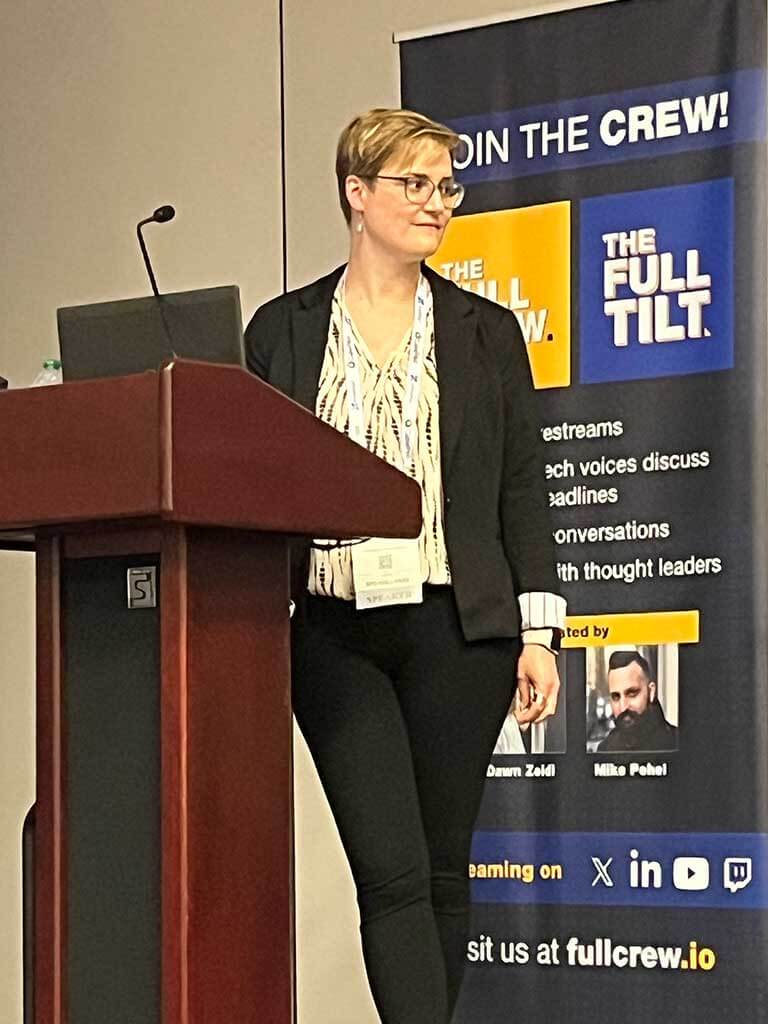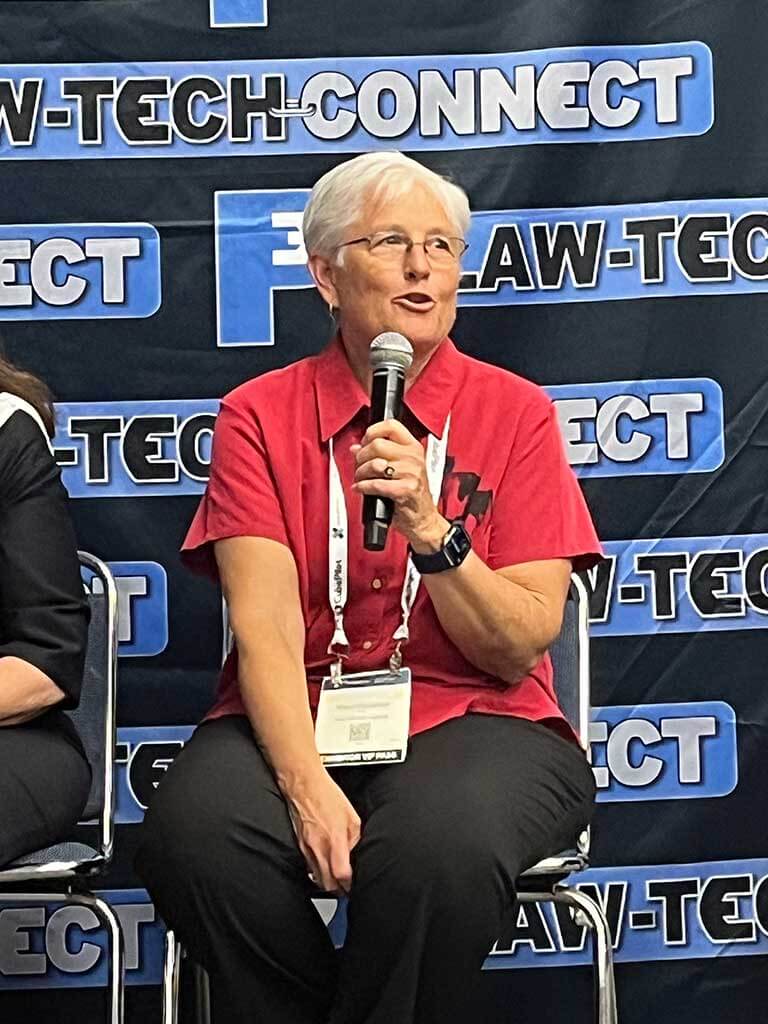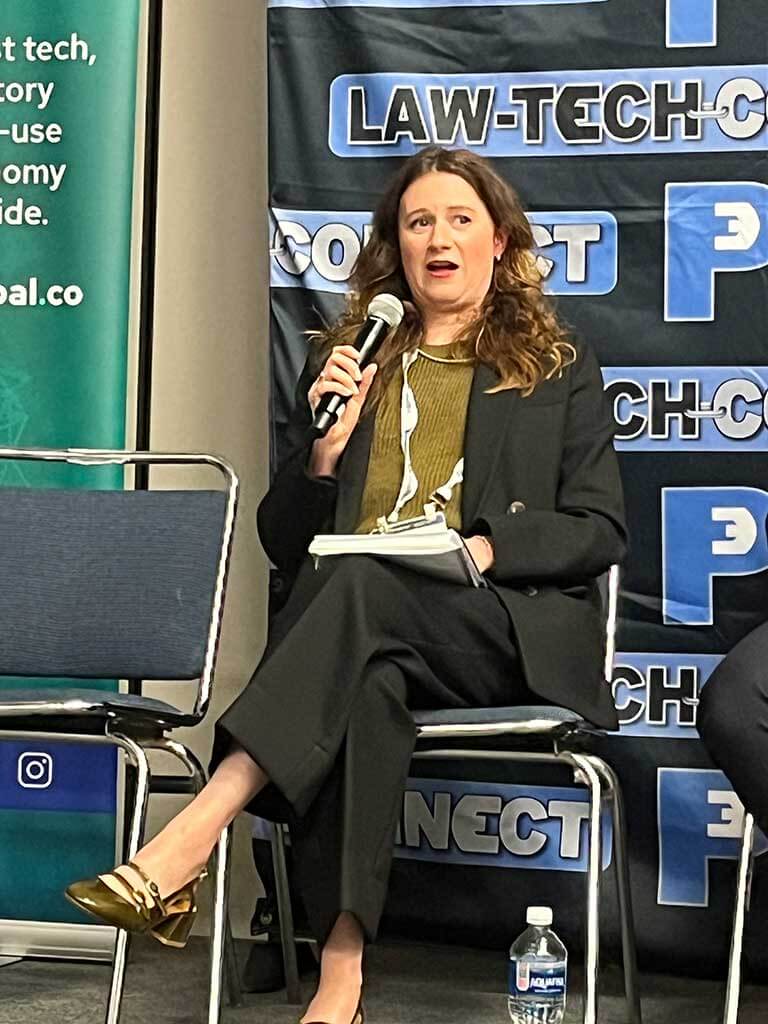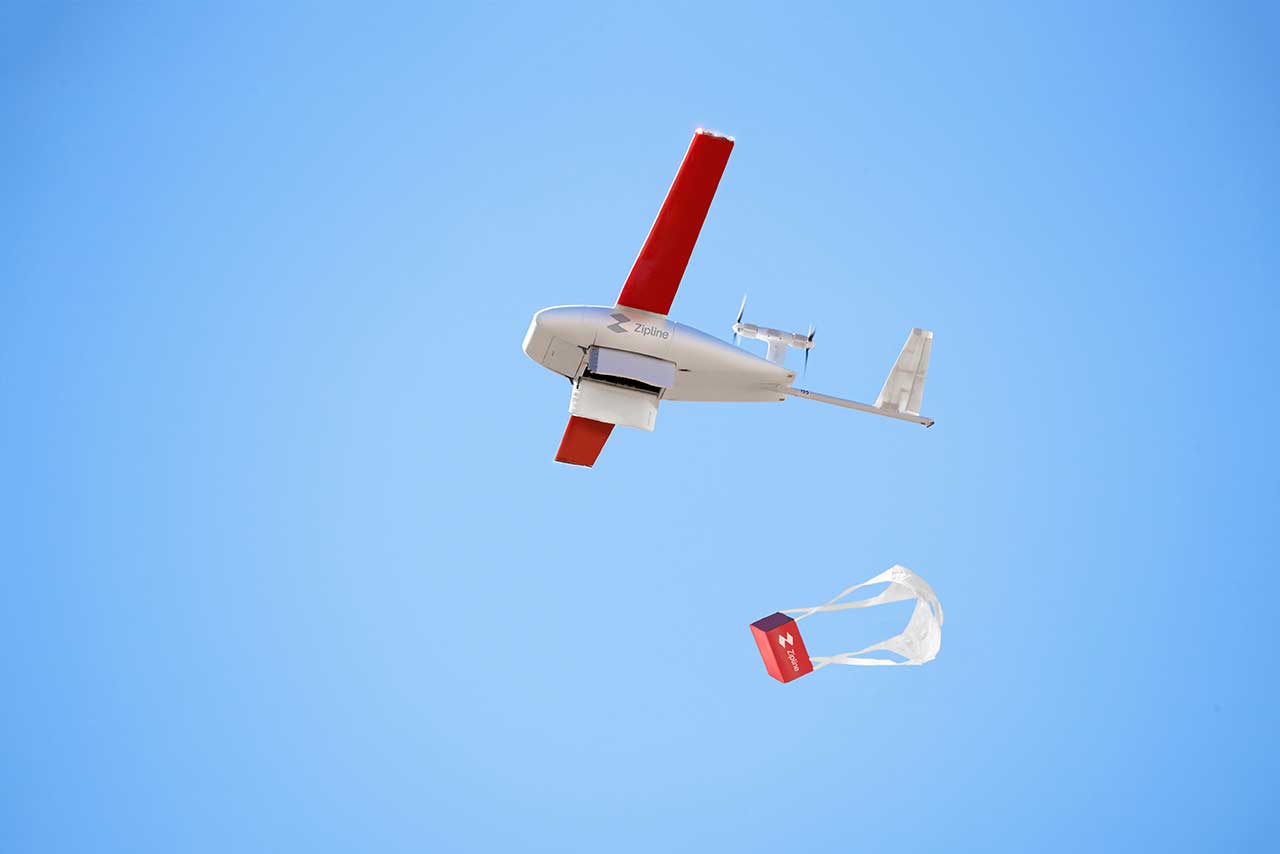Drones have become vital tools for industries ranging from logistics and healthcare to infrastructure and public safety. Yet, the true potential of unmanned aerial systems (UAS) can only be realized when they are fully integrated into the national airspace system (NAS), operating safely and routinely beyond visual line of sight (BVLOS), alongside crewed aircraft and other drones. At Law-Tech Connect 2025, leading voices in drone policy, law, and technology came together to discuss the current systems and tactics and impending rules that will shape this integrated future.

The Regulatory Challenge: Why BVLOS Remains the Holy Grail
Operating safely and efficiently beyond the operator’s direct line of sight remains the core challenge for integrating drones into the NAS. As Mary Caitlin Ray, Senior Counsel at Crowell & Moring and former FAA attorney, explained, “The biggest risk here is the risk of mid-air collision. That’s what everyone’s trying to prevent.”
The traditional aviation framework assumes a pilot in the cockpit who will visually scan for other traffic. Drones, by their nature, require new approaches—especially when operating BVLOS, where the operator cannot see the aircraft directly. Ray explained that the regulatory requirement for pilots to “see and avoid” other aircraft, enshrined in Part 91.113, does not translate easily to drones.
“Because there’s no standardized, universally acceptable detect and avoid (DAA) system that can automatically prevent collisions and meet that ‘see and avoid’ requirement, the reality of what BVLOS is—and needs to be—is at odds with the current language we have in the regulation,” Ray said.
Performance-Based Regulation: Rethinking Risk
The anticipated BVLOS Part 108 notice of public rulemaking (NPRM) represents a shift from prescriptive to performance-based regulation. This means that requirements will vary depending on the size of the drone, the nature of the operation, and the associated risks—moving away from a one-size-fits-all approach.
As Jessica Brightman, who leads the FAA’s efforts on rulemaking and UAS Traffic Management (UTM) implementation, noted, “We are creating a regulation that is performance-based, that creates a regulatory framework for BVLOS operations as well as a regulatory framework to approve UTM or automated data services. Our goal is to rightsize regulatory burden with the risk of the operation.”
Ben Berlin, Aviation Regulatory Counsel at Zipline, emphasized the importance of this approach. “Not every drone needs to have triple redundant systems and parachutes. If it’s a lightweight drone doing a low-risk operation, perhaps you don’t need as much,” he noted.

Words Matter: UTM From “System” to “Ecosystem”
UTM acts as a key enabler for BVLOS and integrated airspace. But, as Brightman clarified, “At the FAA, we’re not looking at it as a system. We’re looking at it as an ecosystem.”
UTM is not a single product or platform, but a federated set of digital services—strategic deconfliction, remote identification (Remote ID), DAA and more—that collectively support safe, automated drone operations.
Spectrum: The Long Pole in the Tent
Reliable, secure spectrum access remains a cornerstone for scaling advanced drone operations, particularly for BVLOS flights and integrated airspace management, yet it remains a “long pole in the tent.” The lack of dedicated, aviation-grade spectrum has forced the industry to rely on commercial wireless and satellite solutions, such as LTE, 5G, and Starlink, while waiting for regulatory certainty.
Jennifer Richter, Partner at Akin Gump, underscored the urgency. “It’s been 12 years since the 5030 to 5091 MHz band was recommended for allocation by the World Radio Conference. Here we are, 10, 12 years later, and we still don’t have good rules for the ability to use this spectrum to support UAS and advanced air mobility (AAM),” she said.
In January 2025, the FCC published a new rule enabling UAS operators to access dedicated spectrum for control-related communications in a portion of the 5030–5091 MHz band. These new service rules, under Part 88, allow operators to obtain direct frequency assignments for non-networked operations, managed by one or more dynamic frequency management systems (DFMSs). The DFMSs will coordinate access, providing temporary frequency assignments to support highly reliable UAS control link communications—crucial for operations in controlled airspace and other safety-critical scenarios. This step is widely seen as foundational for routine, scalable BVLOS operations and for supporting flights involving large aircraft, passengers or complex missions.
However, this is only part of a broader FCC initiative to modernize spectrum rules for advanced air mobility (AAM) and drone operations. In a recent Notice of Proposed Rulemaking (NPRM), the FCC outlined proposals to:
- Open the 450 MHz band for aeronautical command and control with a nationwide licensing framework, adopting flexible rules to minimize interference and enable robust operations at a range of altitudes.
- Expand radiolocation operations in the 24.45–24.65 GHz band for drone detection, supporting critical infrastructure and sensitive sites.
- Modernize power regulations for Commercial Aviation Air-Ground Systems in the 849–851 MHz and 894–896 MHz bands, enhancing in-flight connectivity for passengers.
The NPRM reflects the FCC’s recognition that future airspace integration will require spectrum solutions that are both flexible and robust, supporting not only command and control (C2) but also high-bandwidth applications such as real-time video, sensor data and UTM services.
Richter nevertheless noted that while the FAA has become more flexible—accepting licensed spectrum from commercial wireless or satellite providers as part of certification—true scalability will require the FCC to move beyond temporary or piecemeal solutions. “We need to push as an industry and help the regulators to see that we can safely use commercial wireless, commercial satellites. These commercial resources are safe to use, should be tested, and the FCC, the FAA, and industry should be working to understand if there are any real technical issues that need to be resolved.”
Panelists also emphasized the need for dynamic frequency management, where UTM systems can intelligently select the best available spectrum for each operation. MC Chruscicki, CTO of AX Enterprize and operator of the New York UAS Test Site, observed, the New York UAS Test Site is already seeing a mix of LTE, Starlink, and tactical links on test platforms, reflecting market demand for multimodal communications. “We really need to raise the flag on that one because it’s that important.”
While the FCC’s recent rulemaking and ongoing NPRM represent significant progress, spectrum certainty remains a problem. The industry, regulators, and standards bodies must continue to collaborate to ensure that spectrum policy keeps pace with operational needs and technological innovation.

Real-World Progress: BEYOND, New York and Dallas-Fort Worth
The FAA’s BVLOS journey has been marked by incremental progress. Its UAS Integration Pilot Program (IPP) and its successor, the BEYOND program, have laid some of the groundwork for BVLOS operations by collecting vital data and streamlining approval processes.
The BEYOND program, in particular, has been pivotal in advancing BVLOS operations under real-world conditions. Over 70,000 flights have been conducted—nearly 50,000 of which were BVLOS. Lead participants such as the Choctaw Nation of Oklahoma, Virginia Tech and the University of Alaska Fairbanks have demonstrated BVLOS operations for medical deliveries, infrastructure inspections, and even airport-to-airport flights. These operational successes provide critical data and confidence for the FAA as it moves toward broader rulemaking.
New York UAS Test Site: A Living Laboratory for Integrated Airspace
A key player in this landscape is the New York UAS Test Site at Griffiss International Airport, managed by AX Enterprize. The site offers a unique, highly instrumented environment for BVLOS testing, including a 50-mile corridor from Rome to Syracuse. The Operations Center features a 3D visualization data wall for real-time air domain awareness, supporting simultaneous operations of both crewed and uncrewed aircraft in complex airspace, including urban, suburban, rural, and even mountainous environments.
Chruscicki highlighted the test site’s role: “Because we are operating the New York UAS test site, we have a number of folks that want to come in and test their platforms, test their technology. While UTM services are evolving, they are great as we speak right now. They allow strategic deconfliction so that you can have safe separation in the airspace. You have air domain awareness based on these capabilities.”
She also emphasized that real-life examples at the New York site involve supporting up to five simultaneous tests, sometimes with large and small drones and general aviation aircraft—including Apache helicopters and C-17s in the pattern.
“Part of our safety case is to use UTM services to set up the plan of the day and give the safety briefing to everyone, and show where the different volumes of flights are going to be, where the manned aircraft are going to be, whether they are cooperative or uncooperative, and where the drones are going to fly,” she explained.
The New York UAS Test Site has pushed the boundaries of what integrated airspace can look like, operating BVLOS flights above 400 feet and enabling both government and private sector partners to test and validate new technologies and safety cases. Chruscicki noted, “We are pushing what the future NAS is going to look like in New York. It’s allowing not only the companies to test their technology in a very efficient way, but we’re testing and assessing the tools on a regular basis. We welcome companies to bring in their own software tools. We plug it into our framework, and that way we can evolve the ecosystem itself.”

Operational Evaluation at the Dallas-Fort Worth Key Site: Zipline’s Role
The Dallas-Fort Worth (DFW) UTM Key Site in Texas represents another landmark in the operational evaluation of UTM and the future of scalable, routine BVLOS drone operations. The DFW Key Site is not just about technological validation; it is about creating a scalable, efficient, and safe drone delivery network.
The FAA’s Brightman described its origins: “This started about a little over two and a half years ago…industry came to the FAA and said they wanted to do a more real-world live test of our live implementation of UTM. So we started working with a variety of different groups, including some of the people on stage here, and got to the point where we were able to stand up and start utilizing UTM strategic deconfliction services in the airspace for live operations. We began in North Texas.”
The DFW Key Site is the first commercial deployment of UTM in the United States. The FAA provided historic authorizations for Zipline and Wing Aviation to conduct commercial drone deliveries without visual observers in the same airspace. This first for U.S. aviation allows multiple commercial operators to deliver packages while safely sharing low-altitude airspace using UTM technology for strategic deconfliction and airspace management. Zipline’s involvement is central to the DFW Key Site’s success.
Berlin described how UTM has transformed these operations: “It (UTM) makes it possible to have scale joint operations. If…there was a NOTAM issued by another drone operator in the same airspace we wanted to fly in, we had to first figure out who that was…it’s not always clear. Then we had to call them and deconflict over the phone. You can’t do that hundreds of times a day…Being able to rely on UTM services to do that in the span of seconds automatically makes our vision a possibility.”
Brightman was clear that the FAA’s UTM operational approvals are not limited to just Dallas-Fort Worth. The FAA’s approach at the DFW Key Site is closely tied to its broader UTM Operational Evaluation (OE) program, which brings together a consortium of industry operators and service providers to implement and test UTM standards nationwide. Brightman elaborated on this point. “One thing that’s important to note is that that project is not limited to North Texas. And currently through that project, we now have UTM services operating and supporting live BVLOS operations across the country in North Texas, in Utah, in Arkansas, in New York State, in North Carolina, and some other states to begin to add soon,” she said.
The same digital infrastructure and strategic deconfliction services are being used in these other locations, with the FAA and industry partners leveraging a common set of standards and discovery and synchronization services to enable real-time coordination and conflict management among operators. This expansion demonstrates that the FAA’s operational evaluation of UTM is truly an effort to set the stage for nationwide and global adoption of scalable, automated drone logistics.
Global Harmonization and Standards
As drone operations scale, international harmonization becomes increasingly important. Berlin emphasized the role of organizations like the Global UTM Association (GUTMA): “They bring together civil aviation leaders from all over the world to talk about UTM and integration of drones and the airspace. They have given us a framework for data sharing to do UTM in the United States. I think they’re going to lead the way in a lot of ways, for the future of UTM.” (See previous AG coverage on GUTMA’s UTM Index here.)
Brightman added, “Robust standards work will make or break the FAA’s upcoming rules. We can do all the work all day long and get a rule out, but if there is not a robust suite of standards to meet the performance requirements in that rule, BVLOS operations will not be a reality.” Participation in standards bodies like ASTM and GUTMA is essential for both national and international progress, she said.

Building the Integrated Airspace of Tomorrow
The integration of drones into national and global airspace appears to be unfolding in reality, shaped by new rules, evolving systems and collaborative tactics. While challenges remain significant, from regulatory gaps and technical hurdles to questions of accountability and harmonization, great progress has been made by industry leaders, regulators, and standards bodies. All of this signals a future in which drones operate safely, efficiently and at scale to finally unlock significant economic, social and technological benefits across sectors.
As Liz Forro, Policy Director at the Commercial Drone Alliance, summarized, “I don’t think that I’ve been as optimistic for the future of this industry as I am right now. We are on a precipice, and I think we’re actually about to cross over into the type of scalability that we’ve all been seeing on television and in Super Bowl commercials, but in the best possible way.”
As the industry stands at this inflection point, the call to action seems clear: participate in standards development, engage with regulatory processes and contribute to the collaborative ecosystem that will define the airspace of tomorrow…today. The journey to integrated airspace may be complex, but with continued innovation and partnership, the sky will no longer be the limit— it will truly become the canvas for ubiquitous integrated BVLOS drone operations.
Watch the video of the panel “Managing Drones Beyond: New Rules, Systems & Tactics for Integrated Airspace,” held at Law-Tech Connect 2025 during XPONENTIAL here.
Several milestones will shape the path to fully integrated airspace:
- The release of the FAA’s BVLOS NPRM is expected to set the stage for performance-based, scalable drone operations.
- Continued development and maturation of industry standards for UTM services, airworthiness and operations are critical for both regulatory compliance and international harmonization.
- Progress on spectrum allocation and dynamic frequency management will enable reliable, scalable communications for high-density drone operations.
- Real-world operational evaluations and pilot programs will continue to inform best practices, safety cases and regulatory refinements.
By: Dawn Zoldi

